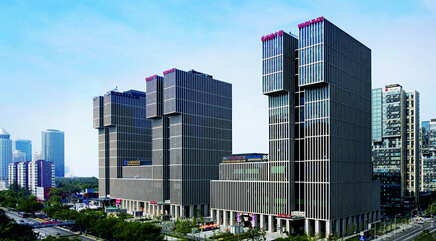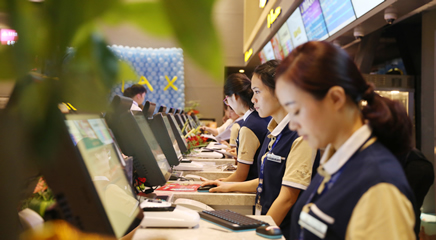Rejuvenation of Private Enterprises Essential to Coping with Crisis
06.03.2009Due to the impact of the global financial crisis, the Chinese economy is facing grave challenges: the export growth has slowed down, some enterprises are experiencing operating difficulties, and more people have lost their jobs. In order to cope with the global economic crisis and reverse the economic downturn, the central authorities of China introduced 10 major measures to further expand domestic demand and promote economic growth. Recently, the central authorities against introduced the adjustment and rejuvenation plans for 10 key industries including auto and steel industries. If these policy measures are truly implemented, we can successfully resist the shock of the financial crisis and pursue steady and rapid economic and social development. The private sector is an important component of the Chinese economy and is facing major difficulties in their development at this critical moment, which should draw high attention and be solved through effective measures.
1. Pay high attention to increasing the development dynamism of the private enterprises
Over the past three decades since China began reform and opening up, the private enterprises in China have developed from the scratch, grown in strength and playing increasingly prominent roles in economic and social development. The relevant data indicate that the private enterprises now account for over 90% of the total number of enterprises around the country, contribute over 50 % of the country’s GDP, explain nearly 50% of the country’s tax revenue and offer 75% of the jobs nationwide. We may say that the development and growth of the private enterprises is one of the greatest fruits of China’s reform and opening up over the past 30 years and the private sector has become the most important and most dynamic component of the socialist market economy. When we fully affirm the great achievements in the development of the private enterprises, we should also realize that the development of the private enterprises still has a great potential to tap. In the countries in Europe and America, every thousand people have 40~60 enterprises and the figure is 3.5 for China. This is an indication that there is a great potential for the development of the private enterprises.
At present, the private enterprises in some of China’s regions and industries are seriously affected by the global financial crisis. They have difficulties in production and marketing, their profitability is dipping and some enterprises have gone bankrupt and been closed down. The operational difficulties of the private enterprises have made lots of peasant workers lose their jobs. Nationwide, about 30 million peasant workers, or nearly 20% of the total number, have lost their jobs or gone to their native places after failing to find jobs. For this reason, the peasants will have a tremendous pressure in finding jobs. The development of the private enterprises directly concerns the recovery and development of the economy, the improvement of the employment and life of the people and the harmony and stability of society. Therefore, when we consider how to cope with the crisis and rejuvenate the economy, we must pay high attention and adopt effective measures to solve the problems confronting the development of the private enterprises so that these enterprises can growth further when China deals with the economic crisis and this economic adjustment will not become an opportunity for the advance of the state-owned enterprises and the regression of the private enterprises.
2. Deepen the reform and optimization of the development environment for the private enterprises
Over the past 30 years since the beginning of reform and opening up, the central authorities have introduced a host of reform measures to promote the development of the private enterprises. Thanks to the constant improvement of the development environment, the private enterprises have become economic entities that enjoy the same important status as their state-owned and collective counterparts do, and have constantly demonstrated the development dynamism. While we affirm the continuous improvement of the development environment for the private enterprises, we must also see that the development environment for the private enterprises still has great room for improvement. The current crisis has fully revealed how poor the development environment is for the private enterprises. According to the “emphasizing reform and increasing vitality” requirement of the central authorities, China should seize the opportunity to further optimize the development environment for the private enterprises by controlling rhythms and intensity and pushing forward reforms.
One, China should ease the policy access threshold. On February 25, 2005, the State Council formally promulgated the 36-point document on the non-public economy. That was the first central government document since the founding of new China, designed to promote the development of the non-public economy. The document allowed the non-public capital to enter the monopolized industries and sectors. But the developments in most regions indicate that most of the newly-added registered private enterprises are in the traditional sectors of wholesale, retail, industrial manufacturing and residential services. The sectors of financial services, communications electronics and cultural industries are still monopolized or semi-monopolized by the public economy. Compared with the state-owned enterprises and the foreign-invested enterprises, the private enterprises still face very high market access thresholds. China must make great efforts to lower the high industrial access thresholds to the private enterprises, help the private enterprises to pursue long-term development, actively adjust their product structures, and increase their strength and capacity to resist economic shocks.
Two, China should intensify credit and financing support. In recent years, the difficulties of the private enterprises in getting loans have been somewhat eased thanks to the efforts of the central bank and the relevant departments. But the distribution of the financial resources indicates that the availability of the financial resources to the private enterprises is clearly lower than that to the state-owned enterprises. Although the private economy contributes over 50% of the country’s GDP and tax revenue, it uses only about one-third of the total financial resources. Intensifying financial support to the private enterprises is both a requirement to promote the development of the private enterprises and also a requirement to enhance the use efficiency of the financial resources. At present, the central authorities have introduced a “4-trillion-yuan” economic stimulus package and the plans for adjusting and rejuvenating 10 key industries. These major measures all require the strong support of financial resources and can easily cause a squeeze on the financing of the private enterprises. For this reason, a considerable number of the private enterprises hope a specific ratio of the newly-added loans will be explicitly allocated to the private enterprises to solve their financing difficulties. They also hope the government can introduce more innovative financing tools to






